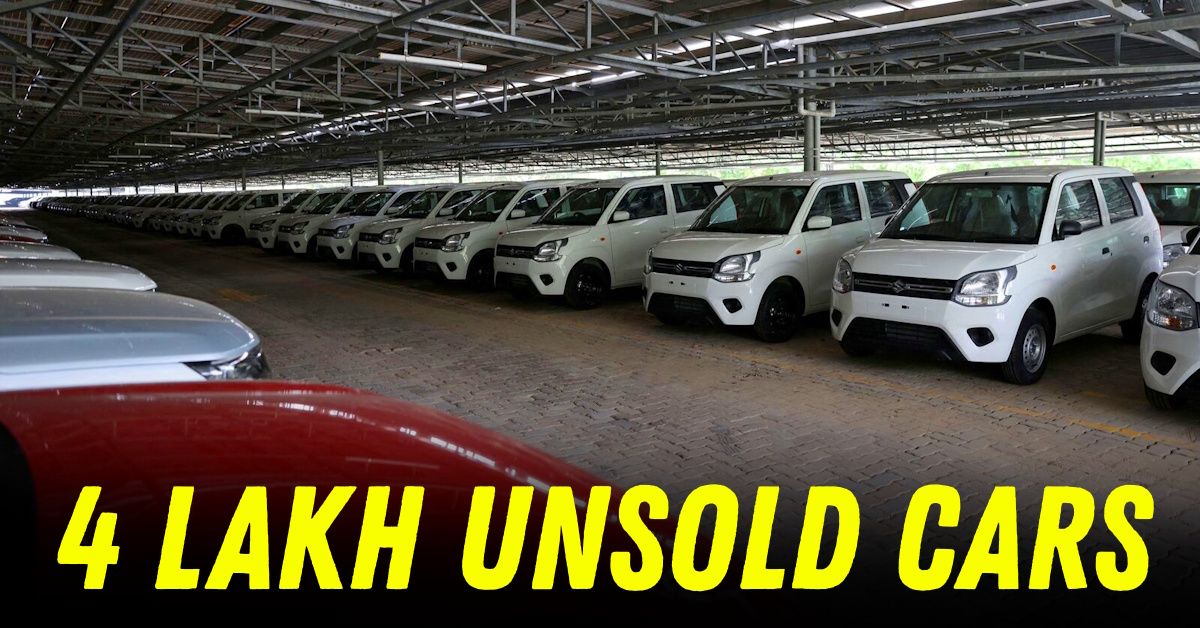India's Auto Industry Faces Massive Inventory Crisis with Over 4 Lakh Unsold Cars


Picture this: nearly half a million brand-new cars sitting idle in dealership lots across the country, gathering dust instead of serving families. This isn't a dystopian scenario but the stark reality facing the automobile industry today, where unsold inventory has ballooned to a record ₹52,000 crore.
The numbers paint a sobering picture. Dealerships are currently holding between 440,000 to 550,000 unsold vehicles, representing 52-60 days of stock when the industry norm hovers around 21 days. To put this in perspective, that's equivalent to nearly two months of sales sitting unsold, tying up massive amounts of working capital and creating unprecedented financial strain on dealerships nationwide.
The roots of this inventory crisis run deeper than seasonal fluctuations or temporary market hiccups. Multiple factors have converged to create what many in the industry describe as the most challenging period for car dealers in recent memory.
Consumer sentiment has taken a significant hit, with buyers increasingly postponing purchase decisions. The post-pandemic economic recovery, whilst showing promise, hasn't translated into the robust car sales many manufacturers anticipated. Retail car sales have been declining consistently, with December 2024 seeing a sharp 45% month-on-month drop despite aggressive discounts and promotional offers.
The mismatch between wholesale dispatches and retail sales has become glaringly apparent. Manufacturers continue pushing vehicles to dealerships based on production targets and market share ambitions, whilst actual consumer demand remains subdued. This disconnect has created a vicious cycle where dealerships find themselves drowning in inventory they cannot move quickly enough.
Weather patterns have also played spoilsport. Unseasonal heavy rains across South India and cyclonic conditions in eastern states disrupted showroom visits and delayed purchase decisions during crucial sales periods. Even the traditionally strong festive season, which typically accounts for significant vehicle sales, fell short of expectations despite recording some growth.
The shift towards electric vehicles has introduced another layer of complexity. Many potential buyers are adopting a wait-and-see approach, delaying purchases whilst hoping for better EV options or improved charging infrastructure. This technological transition period has created uncertainty in the market, with traditional internal combustion engine vehicles facing reduced demand.
For dealerships, this inventory buildup represents more than just storage challenges. Each unsold car represents a financial burden, with dealers typically financing their inventory through loans. The longer vehicles sit on lots, the higher the interest costs, creating a mounting financial pressure that threatens the viability of many dealerships.
Working capital stress has intensified significantly, with the current situation being compared to historical lows. The Federation of Automobile Dealers Associations has repeatedly highlighted how inventory levels ranging from 52-53 days create serious concerns about dealer sustainability.
The relationship between manufacturers and dealers has become increasingly strained. Dealers argue that manufacturers continue pushing stock to meet wholesale targets regardless of retail demand patterns. This practice, known as "push sales," prioritises market share metrics over actual customer demand, leaving dealers to bear the financial consequences.
Whilst the inventory crisis spells trouble for manufacturers and dealers, it presents unprecedented opportunities for car buyers. The current market conditions have created what many consider the best buying environment in years.
Discounts have reached historical highs, with some dealerships offering benefits worth lakhs of rupees to clear stock. Cash rebates, extended warranties, free accessories, and attractive financing schemes have become commonplace as dealers desperately attempt to move inventory.
The timing couldn't be better for buyers who have been on the fence about purchasing. Year-end sales periods traditionally offer good deals, but the current inventory overhang has amplified these benefits substantially. Buyers can negotiate from a position of strength, knowing that dealers are highly motivated to close deals.
However, savvy buyers should approach these opportunities strategically. Whilst discounts are attractive, it's essential to focus on models that offer good long-term value rather than simply chasing the biggest discount. Some slow-moving inventory might be previous-year models or variants with limited appeal, which could affect resale values down the line.
The industry is cautiously optimistic about gradual recovery, though most believe normalisation will take several months. Manufacturers like Maruti Suzuki have already announced production cuts to help address the inventory imbalance, signalling recognition of the problem's severity.
Rural markets have shown relatively stronger performance, with companies like Maruti Suzuki reporting 45% of sales coming from rural areas. This trend suggests that recovery might be geographically uneven, with rural demand potentially offsetting urban market sluggishness.
The festive season did provide some relief, with October 2024 seeing a 32% surge in retail auto sales. However, this growth wasn't sufficient to significantly dent the overall inventory levels, indicating that sustained improvement will require consistent monthly performance rather than seasonal spikes.
The current crisis, whilst painful, might ultimately lead to healthier manufacturer-dealer relationships. The experience has highlighted the need for better demand forecasting and more responsive production planning that aligns with actual market conditions rather than ambitious growth projections.
For now, the ₹52,000 crore worth of cars sitting in dealership lots serves as a stark reminder of the challenges facing the automobile industry. Whilst this presents excellent opportunities for buyers and valuable lessons for manufacturers, the path back to inventory normalisation remains long and uncertain. The next few months will be crucial in determining whether this crisis becomes a catalyst for positive industry transformation or a prolonged period of market adjustment.